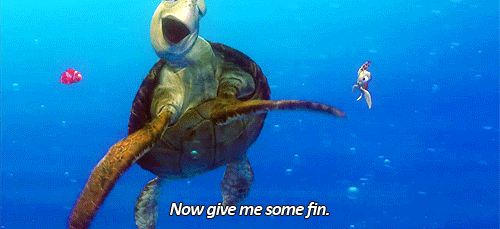Last week was the results section, and now we have the discussion section to write. Since the sources I used last time have been foundational sources in the formation of my methods and results, I plan to analyze their discussion sections as well.
I really liked that "Images of Couples and Families in Disney Feature-Length Animated Films," the thematic analysis of families, immediately related the results to real world applications. In this study they took each theme they found prevalent and talked about what that theme meant in terms of child therapy practices. This gives me the idea to separate my ideas based on theme, in my case I will probably do movies that fit the structure and cycle and movies that break it. Then I will examine why it is the case that these movies seem to follow or do not follow the cycle. Since the majority of movies broke the cycle I will focus on that, and talk about the changes and reasons behind rebellious characters and such.
Similarly, "Post-Princess Models of Gender: The New Man in Disney/ Pixar" jumped right into the real world implications of their character analysis, focusing on how these lessons affect their son's understanding. They then brought in other stats and sources to talk about the broader influence Disney has on viewers. This was mostly what I did in my literature review. But, I think it is important to see that they brought in new information here to prove their point that the messages in Disney movies are being transmitted to a wide audience, and therefore need criticism. The new information was used as a way to transition into the broader implications of very intense character analyses. I plan on bringing in sources to prove WHY it is more compelling for Disney movies to not follow Marxist definitions and what about families have changed in time. This will transition from my specific movies to the real world implications and significance of my research in the field.
"Gender Role Portrayal and the Disney Princesses" followed very similarly as the other two. One difference though, was that each section had a sentence that clearly answered the question/ addressed the hypothesis, a small detail, but helpful reminder. Since this is going to be read by an AP Reader it is very helpful to use precise language so that they know exactly where my "answer" is. I also liked how to answer their question, they first presented a broad statement, that gender was both stereotypical and non-steretypical, and then went into the nuances of this statement. To address the limitations of their study, they present some issues with coding complex behaviors and a select sample of movies, which is basically what I did so these are considerations I will take when writing my limitations.
I'm still a little vague on what information specifically I am putting in here, but I am starting to research that tomorrow! This is one of my favorite parts relating information back to meaning so I am looking forward to it. See you next week!
(539)

Hey Grace! I hope your weekend was gucci. I am really excited to see what implications you pull from your results. However, I just wanted to clarify a few things. You talked about possibly separating your ideas based on themes. Have you not already done that through your thematic analysis? Also, based on your results, did you confirm or reject your null hypothesis? That is a good starting point for your discussion! I'm super excited to read your next blog post!
ReplyDeleteThanks,
Ved Narayan
Hey Grace!
ReplyDeleteI really, really like how you're planning on tying everything back to some of the information found in your lit review. That way, your readers will definitely remember all of the points that you've made, and you can make sure that there's no confusion regarding the roots of your conclusion. In fact, over all, I think your plan for reminding the reader of the information you've already presented is the best one I've seen, so great job!! However, I agree with Ved in the sense that your explanation of your first source seems like it's more of a part of the data analysis than the results section. If you're going to reiterate some of the steps of your process, be sure to not completely restate parts of your thematic analysis, because that'll take up a lot of space. Over all, amazing job!
Hi Grace,
ReplyDeleteIt sounds like your research is going great. Placing your data in the context of the theme you are analyzing will help illuminate your discussion sections, but make surer you do not get too carried away in the technicalities of your data. Bringing in additional sources to provide warrants in your second paper will definitely provide some credibility. Even just restating your evidence from the lit review is good enough. Placing a green light for the AP reader is also a good idea. My major concern is how you plan to build upon your results. I agree with Ved and Kimy in that there is too much similarity to the results section.
-
Ashwath V.
Grace --- sorry we didn't get a chance to talk about your discussion section, but I think we made some good progress on improving your results section (which will translate to an improved discussion section). Ultimately, the discussion should first synthesize the many conclusions to answer the question and then use past literature to either 1) explain WHY you got the results you did or to 2) show discrepancies between what you've found and the literature to show what questions your research brings up. Then, you'll move on to discussing the limitations/future directions and then significance of your research.
ReplyDelete